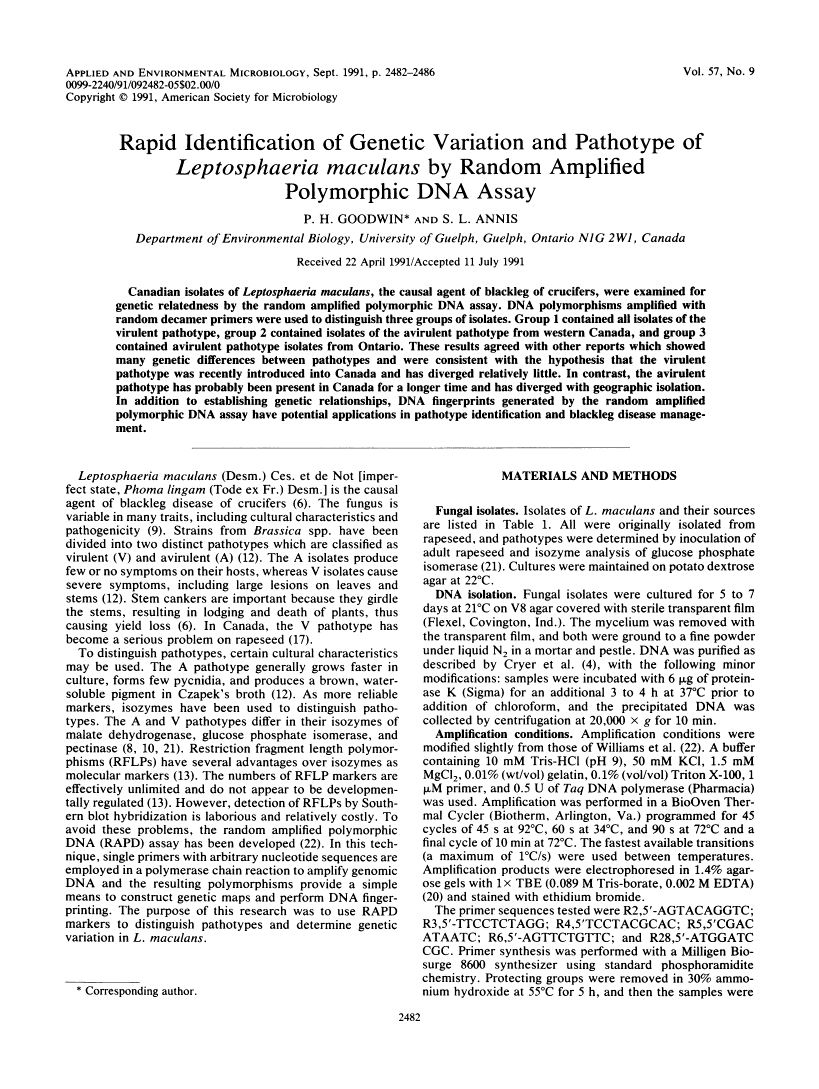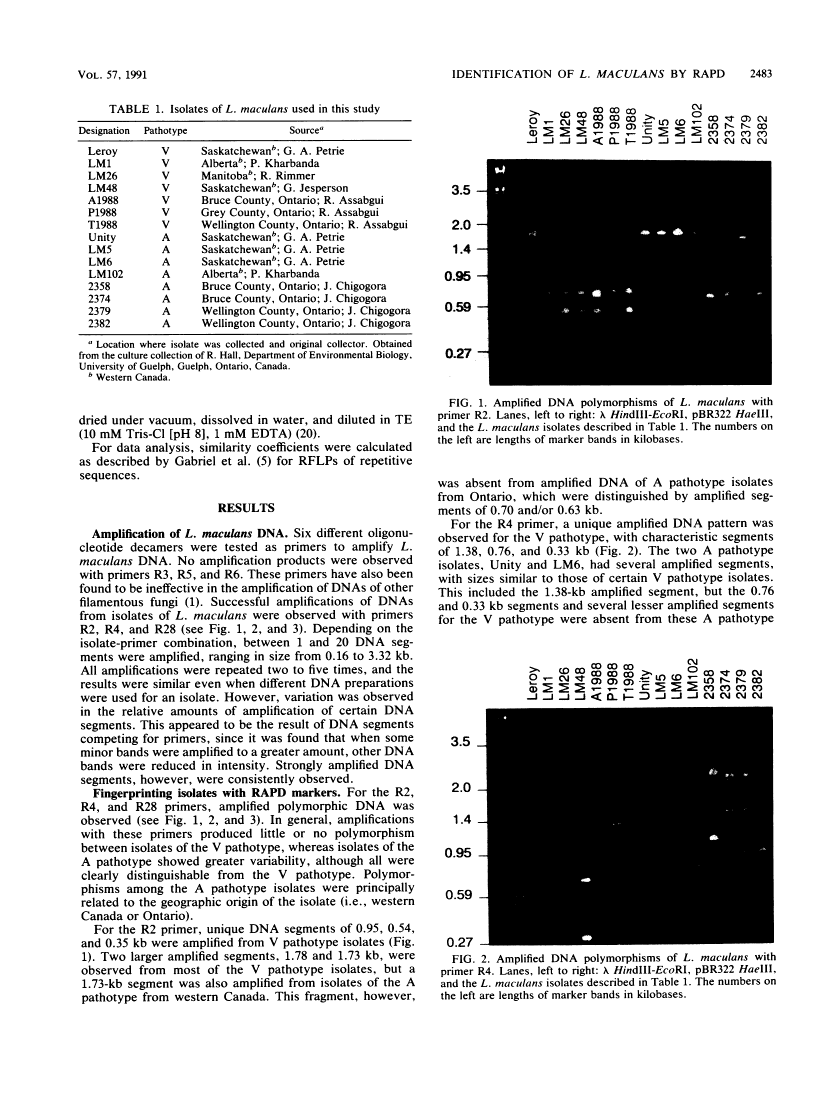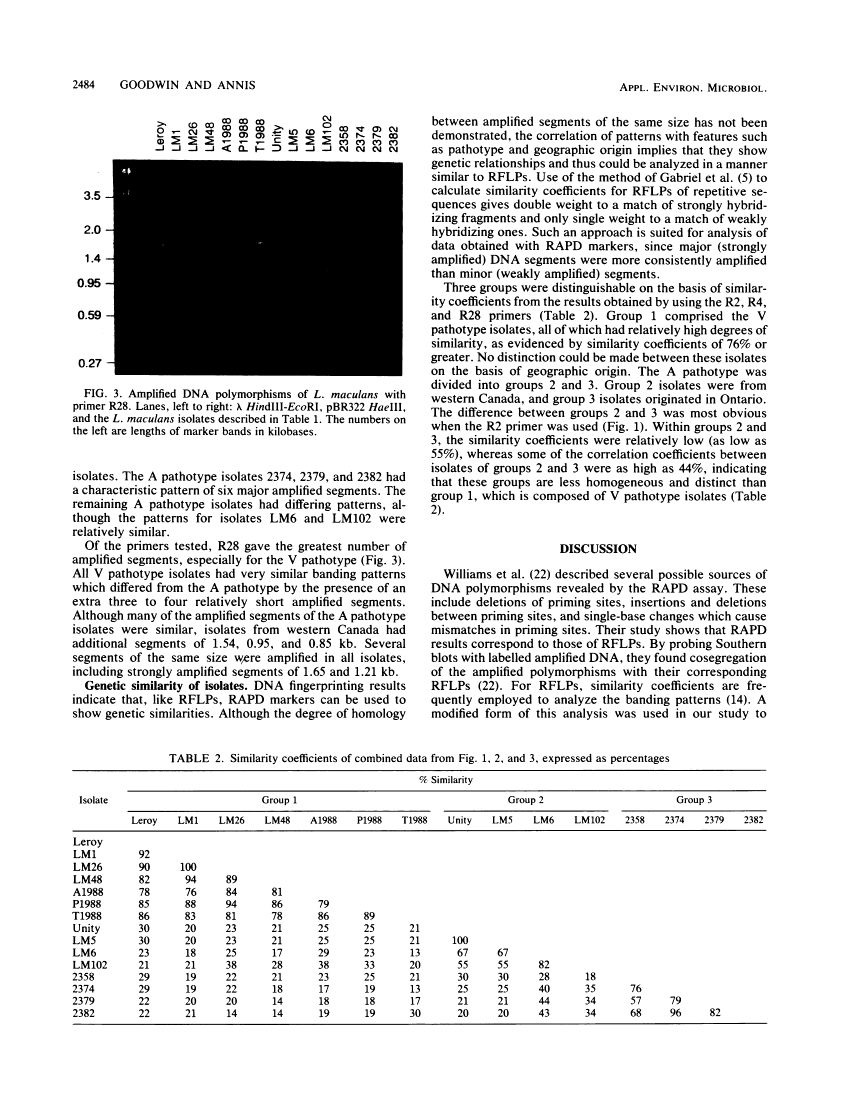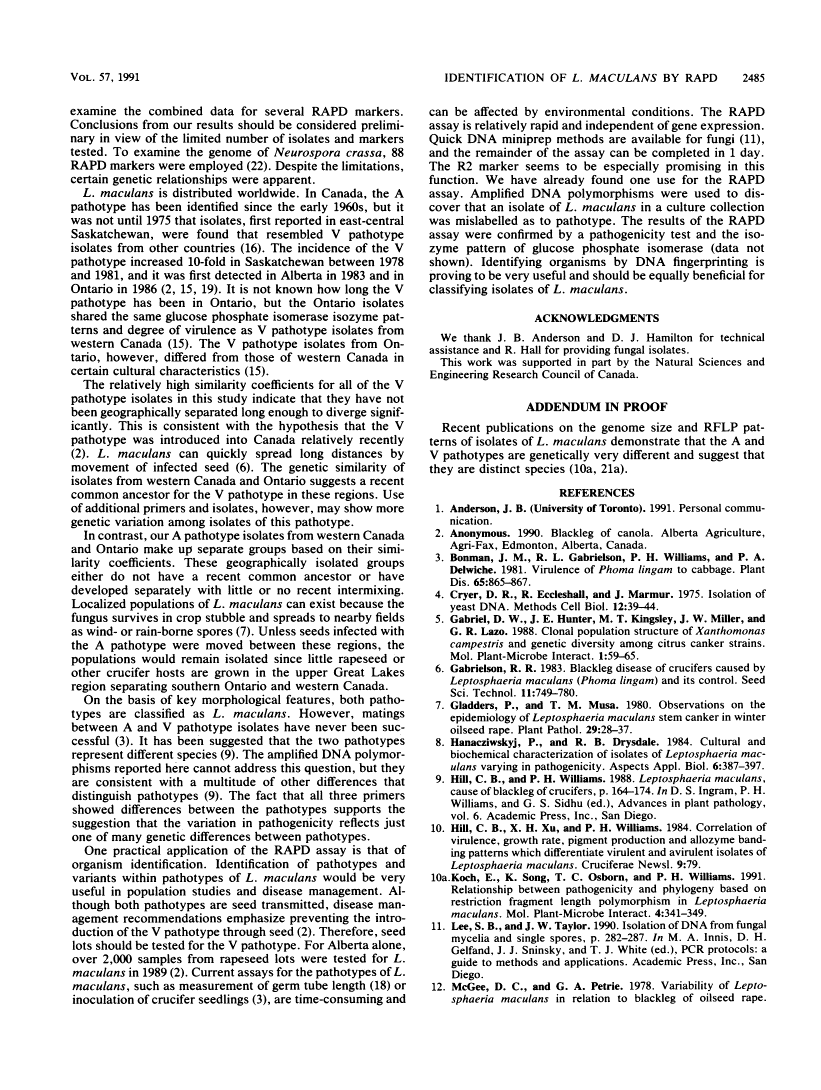Abstract
Free full text

Rapid identification of genetic variation and pathotype of Leptosphaeria maculans by random amplified polymorphic DNA assay.
Abstract
Canadian isolates of Leptosphaeria maculans, the causal agent of blackleg of crucifers, were examined for genetic relatedness by the random amplified polymorphic DNA assay. DNA polymorphisms amplified with random decamer primers were used to distinguish three groups of isolates. Group 1 contained all isolates of the virulent pathotype, group 2 contained isolates of the avirulent pathotype from western Canada, and group 3 contained avirulent pathotype isolates from Ontario. These results agreed with other reports which showed many genetic differences between pathotypes and were consistent with the hypothesis that the virulent pathotype was recently introduced into Canada and has diverged relatively little. In contrast, the avirulent pathotype has probably been present in Canada for a longer time and has diverged with geographic isolation. In addition to establishing genetic relationships, DNA fingerprints generated by the random amplified polymorphic DNA assay have potential applications in pathotype identification and blackleg disease management.
Full text
Full text is available as a scanned copy of the original print version. Get a printable copy (PDF file) of the complete article (1.0M), or click on a page image below to browse page by page. Links to PubMed are also available for Selected References.
Images in this article
Selected References
These references are in PubMed. This may not be the complete list of references from this article.
- Cryer DR, Eccleshall R, Marmur J. Isolation of yeast DNA. Methods Cell Biol. 1975;12:39–44. [Abstract] [Google Scholar]
- Nei M, Li WH. Mathematical model for studying genetic variation in terms of restriction endonucleases. Proc Natl Acad Sci U S A. 1979 Oct;76(10):5269–5273. [Europe PMC free article] [Abstract] [Google Scholar]
- Williams JG, Kubelik AR, Livak KJ, Rafalski JA, Tingey SV. DNA polymorphisms amplified by arbitrary primers are useful as genetic markers. Nucleic Acids Res. 1990 Nov 25;18(22):6531–6535. [Europe PMC free article] [Abstract] [Google Scholar]
Associated Data
Articles from Applied and Environmental Microbiology are provided here courtesy of American Society for Microbiology (ASM)
Full text links
Read article at publisher's site: https://doi.org/10.1128/aem.57.9.2482-2486.1991
Read article for free, from open access legal sources, via Unpaywall:
https://aem.asm.org/content/aem/57/9/2482.full.pdf
Free to read at aem.asm.org
http://aem.asm.org/cgi/content/abstract/57/9/2482
Free after 4 months at aem.asm.org
http://aem.asm.org/cgi/reprint/57/9/2482
Citations & impact
Impact metrics
Citations of article over time
Article citations
SNP and SCAR Markers for Specific Discrimination of Antler-Shaped Ganoderma lucidum.
Microorganisms, 7(1):E12, 09 Jan 2019
Cited by: 2 articles | PMID: 30634458 | PMCID: PMC6352128
Simple and rapid detection of Tilletia horrida causing rice kernel smut in rice seeds.
Sci Rep, 6:33258, 14 Sep 2016
Cited by: 11 articles | PMID: 27624858 | PMCID: PMC5021929
Detection of Tilletia controversa using immunofluorescent monoclonal antibodies.
J Appl Microbiol, 118(2):497-505, 21 Dec 2014
Cited by: 3 articles | PMID: 25421490
Genetic diversity of Phytophthora capsici (Pythiaceae) isolates in Anhui Province of China based on ISSR-PCR markers.
Genet Mol Res, 11(4):4285-4296, 17 Dec 2012
Cited by: 4 articles | PMID: 23315808
Molecular characterization of mycobiota and aflatoxin contamination of retail wheat flours from Jeddah markets.
Foodborne Pathog Dis, 7(9):1047-1054, 01 Sep 2010
Cited by: 6 articles | PMID: 20528464
Go to all (84) article citations
Similar Articles
To arrive at the top five similar articles we use a word-weighted algorithm to compare words from the Title and Abstract of each citation.
Strain typing of polish Leptosphaeria maculans isolates supports at the genomic level the multi-species concept of aggressive and non-aggressive strains.
Microbiol Res, 156(2):169-177, 01 Jan 2001
Cited by: 4 articles | PMID: 11572457
Pathotypes and genetic relationship of worldwide collections of Elsinoë spp. causing scab diseases of citrus.
Phytopathology, 99(6):721-728, 01 Jun 2009
Cited by: 9 articles | PMID: 19453232
Comparison of the 5.8s rDNA and internal transcribed spacer sequences of isolates of Leptosphaeria maculans from different pathogenicity groups.
Curr Genet, 23(5-6):490-495, 01 May 1993
Cited by: 38 articles | PMID: 8319307












